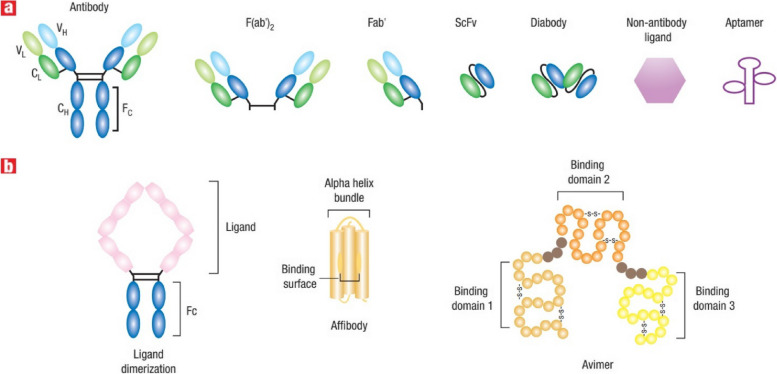Fig. 12.
Different types of targeting agents and strategies to enhance their affinity and selectivity in two parts. Part a shows various targeting molecules, such as monoclonal antibodies or fragments, non-antibody ligands, and aptamers. Antibody fragments, such as F(ab')2 and Fab', are generated by enzymatic cleavage, while molecular biology techniques produce Fab', scFv, and bivalent scFv (diabody) fragments. The antibody structure comprises the variable heavy chain (vH), variable light chain (vL), constant heavy chain (CH), and constant light chain (CL). Non-antibody ligands consist of vitamins, carbohydrates, peptides, and other proteins. Aptamers can be made up of DNA or RNA. Part b outlines methods to enhance affinity and selectivity, such as ligand dimerization or screening for conformation-sensitive targeting agents like affibodies, avimers, and nanobodies. Ligand dimerization involves linking two ligands together, which increases binding affinity. Conformation-sensitive targeting agents are proteins that recognize specific three-dimensional structures and differentiate between closely related molecules. Intact antibodies and their fragments are also useful for enhancing affinity and selectivity. Reprint from [132] with a permission from Springer Nature

